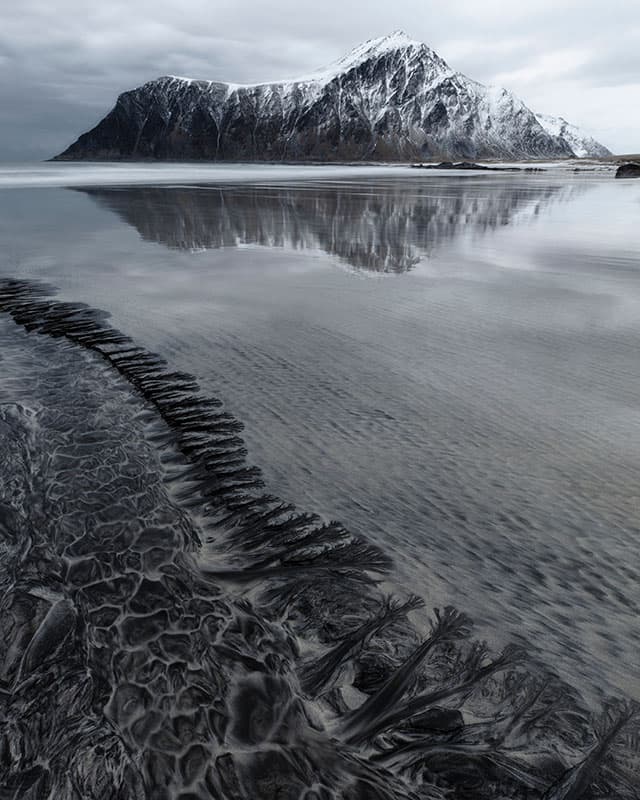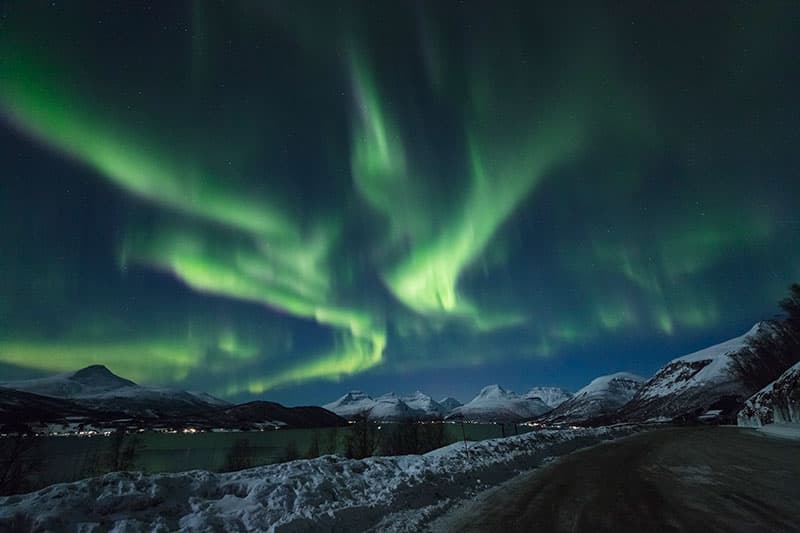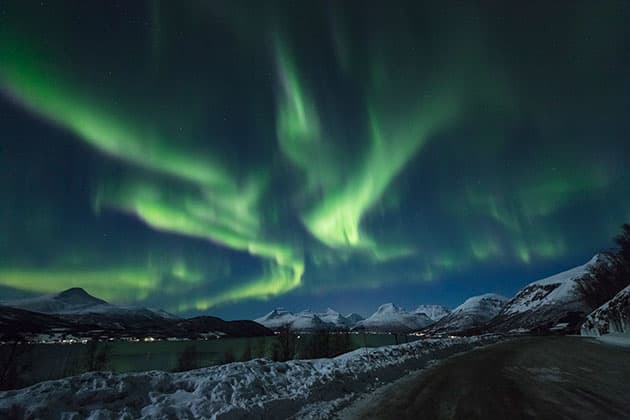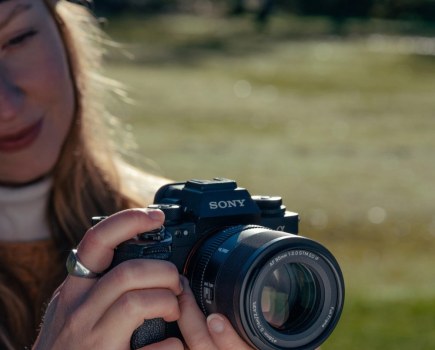
As well as pristine beaches, there are a number of rugged granite shorelines. Credit: Andy Farrer
The Archipelago of Lofoten in Norway is north of the Arctic Circle in the county of Nordland. The dramatic islands of Hinnøya, Austvågøy, Gimsøya, Vestvågøy, Flakstadøya and Moskenesøya are linked by bridges. These bridges are fantastic photo opportunities in their own right.
Owing to the warm Gulf Stream, Lofoten has a much milder climate than any other parts of the Arctic Circle. Between late May and mid July you can experience the midnight sun, while the northern lights can be viewed from September through to mid April.
The dramatic peaks are truly breathtaking and abundant. Literally at every turn you’ll be wowed by the scenery. Whether it’s day or night, the mountains will provide stunning backdrops. You will find numerous beaches, such as Haukland and Flakstad, that are pristine. As well as beaches there are lots of rugged granite shorelines, which often have layers of ice and snow. The fishing villages such as Hamnøya and Henningsvær are very picturesque where you’ll likely see white-tailed sea eagles picking fish from the fjords and circling above the mountains. The fish are dried on large racks dotted around and about.
The weather here can change quickly, but you can hardly fail to capture dramatic scenes. Even in calm, still weather, the fjords look incredible, especially with mirror-like reflections of the mountains. Remember to note your favourite viewpoints during the day so you can revisit them after dark to try to capture them with dancing aurora overhead.

White-tailed eagles can be seen in the fishing villages of Hamnøya and Henningsvær. Credit: Andy Farrer
Shooting advice
My favourite time of year to visit is February and March, with nice long nights for chasing the aurora and shorter days where the golden hour lasts most of the day. Being at such high latitudes the days are very short; in fact, from 27 November to 15 January, the sun doesn’t actually rise above the horizon. Seeing the first sunrise of the year in mid-January is always a great time to visit. The all-day (albeit short days) twilight is a joy for photography.

The Northern Lights can be viewed in this region from September through to mid-April. Credit: Andy Farrer
Food and lodging
Airbnb has become quite popular now, but the fisherman’s cabins (rorbuer) are the nicest way to enjoy your stay. The cabins, usually on stilts, have terrific views across fjords with mountain backdrops. If you’re near larger towns there are some nice restaurants, but down on the Lofoten Islands there are very few places to go. So stock up at supermarkets in the towns and embrace the hotdogs at the garages. Make sure you have supplies for Sundays, as you’ll find it difficult to find anywhere open at all.

There are plenty of dramatic peaks, which provide stunning backdrops. Credit: Andy Farrer
A word of warning
Lofoten has become much busier in recent years, so book accommodation in advance. If you’re planning to drive from Tromsø rather than fly in, consider a night’s accommodation en route, as it’s a long drive, especially if it’s snowing. You can fly from Tromsø and rent cars locally.
Kit list
- Canon EOS 5DS/5D Mark IV I love my 50MP EOS 5DS, especially for shooting crisp, icy winter scenes where the resolution is really pronounced. I switch to the 5D Mark IV for the aurora images at night, as its ISO performance for astrophotography is much better suited.
- Canon EF16-35mm f/2.8L III USM This lens is very versatile; it’s the perfect choice for wideangle landscapes while also being fast enough for pin-sharp astrophotography. It also uses the standard 100mm Lee filter system, so no extra sets of filters are required.
- Arca Swiss PO Ballhead This is a lightweight, but strong, ball head that I use primarily for travel and astro photography. It’s very easy to get locked into position and, unlike geared heads, it allows the camera to be pointed directly upwards, which is very useful for aurora scenes.







